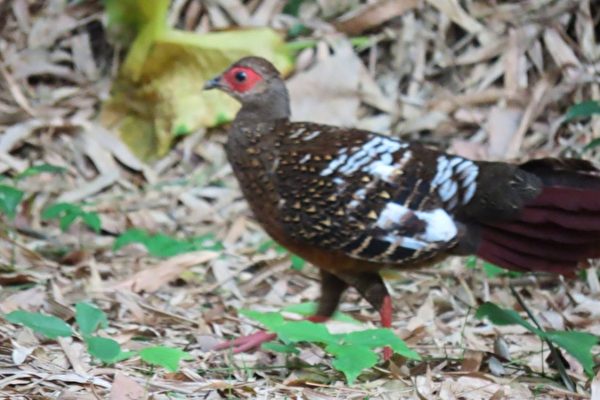Taiwan’s endemic Blue Magpie, classified as a second-level conservation species, was recently spotted in the mountainous regions of Chiayi by Ali Mountain Forest Railway guide and ecological observer Su Chia-hung. Su captured a rare moment of a mating pair of Blue Magpies exhibiting leucism, where their feathers displayed a whitening phenomenon, something he described as a sight he had never witnessed in his 13 years of photographing Blue Magpies.
According to Su, the male Blue Magpie is predominantly blue in color, hence its name. These elusive birds, also known as “mountain hermits,” are usually seen on forest roads during dawn, dusk, and misty conditions, displaying extreme vigilance. Recently in a bamboo forest in Chiayi’s mountainous area, Su observed two male Blue Magpies engaged in territorial disputes, common during their breeding season from March to July, resulting in occasional confrontations.
Su was astonished to come across a pair of Blue Magpies, both male and female, displaying leucism in their feathers. He exclaimed, “I’m incredibly fortunate! The probability of this occurrence is probably one in a million.” This marks the first time in Su’s 13 years of observing Taiwan’s mountains that he has encountered Blue Magpies with whitened feathers, indicating potential genetic anomalies possibly due to unique environmental conditions or inbreeding situations.
Researcher Yao Zheng-de from the Biodiversity Research Institute of the Council of Agriculture in the Republic of China explained that the whitening of Blue Magpie feathers may result from peculiar environmental factors or potential inbreeding situations, disrupting the color-producing processes during feather development. Yao clarified that although the feathers turn white due to interference in the pigment production process, the Blue Magpie does not exhibit full-body whiteness but rather partially affected feathers.
Described as shy birds, Blue Magpies are primarily active in seeking food between 6-8 am and 3-6 pm. Their diet is omnivorous, primarily consisting of foraging on the forest floor for decaying matter, tender leaves, berries, grass seeds, insects, and earthworms.
Differentiating between male Blue Magpies and Mikado Pheasants, often confused due to their similar appearances, ecologist and photographer Su Chia-hung, known as “Mr. Mikado,” shared identification tips. While the male Mikado Pheasant lacks white feathers on its head and back, sporting gray feet, and approximately 16 tail feathers with distinctively long central feathers, the male Blue Magpie features white head feathers, a white section on the back, red-colored sides, and red feet. Additionally, the Blue Magpie has two elongated white tail feathers while the female presents dark brown back feathers and dark red-brown tail feathers.
Su emphasized that Blue Magpies inhabit lower altitudes compared to Mikado Pheasants, residing in primary forests and mixed forests at elevations ranging from 500 to 2,500 meters. They prefer moist, leaf-covered ground for activities and typically breed from April to July, digging shallow nests on the forest floor. With extensive deforestation at mid to low altitudes threatening their habitat, Su urges the public to adhere to the principles of “do not feed, do not startle, do not disturb” if encountering Blue Magpies to safeguard their ecological environment.

